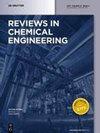农业控制释放的化学策略
IF 6.6
3区 工程技术
Q1 ENGINEERING, CHEMICAL
引用次数: 2
摘要
随着世界人口近80亿的增长,预计到2050年将扩大到90亿,未来的粮食需求将不可避免地上升。作物初级生产力是粮食和饲料价值链的核心。过度和低效施肥造成了严重的环境和生态问题,同时也造成了经济浪费。除肥料外,农药、植物生长调节剂和其他农用化学品(例如储存的动物粪便和激素)也会造成环境问题,需要特定技术来确保人类健康和全球生态系统的安全,同时增加粮食产量。在农艺、法律和环境方面都存在开发控制释放解决方案以优化农业实践的“需求”。在这方面,(聚合物)化学可以提供广泛的策略来应对当前与生物降解、过度施肥、农药使用、高效精准农业等相关的问题,通过量身定制的材料设计,允许控制活性成分的释放。因此,本文将重点介绍农业工业中设计控释系统的(聚合物)化学策略,特别是过去四年来的最新进展。本文章由计算机程序翻译,如有差异,请以英文原文为准。
Chemical strategies towards controlled release in agriculture
Abstract With an increasing world population of nearly eight billion which is expected to expand towards nine billion by 2050, future food demands will rise unavoidably. Primary productivity of crop is at the center of the food and feed value chain. Excessive and low efficiency fertilization cause severe environmental and ecological problems, along with economic wastage. Next to fertilizers, also pesticides, plant growth regulators and other agrochemicals (e.g., stored animal manure and hormones) pose environmental issues and require specific technologies to ensure security of human health and the global ecosystem while increasing food productions. There is an agronomic, legal and environmental ‘demand’ to develop controlled release solutions to optimize agricultural practices. In this regard, (polymer) chemistry can offer a wide range of strategies to cope with the current issues related to biodegradation, overfertilization, pesticide use, efficient precision agriculture etc. through tailored material design allowing controlled active components release. Therefore, this review focusses on (polymer) chemical strategies to design controlled release systems in the agricultural industry, covering specifically the state-of-the-art from the past four years.
求助全文
通过发布文献求助,成功后即可免费获取论文全文。
去求助
来源期刊

Reviews in Chemical Engineering
工程技术-工程:化工
CiteScore
12.30
自引率
0.00%
发文量
37
审稿时长
6 months
期刊介绍:
Reviews in Chemical Engineering publishes authoritative review articles on all aspects of the broad field of chemical engineering and applied chemistry. Its aim is to develop new insights and understanding and to promote interest and research activity in chemical engineering, as well as the application of new developments in these areas. The bimonthly journal publishes peer-reviewed articles by leading chemical engineers, applied scientists and mathematicians. The broad interest today in solutions through chemistry to some of the world’s most challenging problems ensures that Reviews in Chemical Engineering will play a significant role in the growth of the field as a whole.
 求助内容:
求助内容: 应助结果提醒方式:
应助结果提醒方式:


